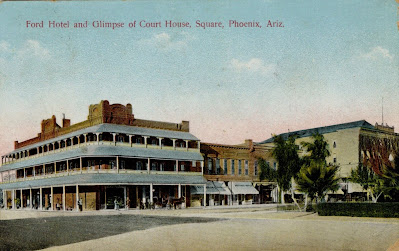It is not known exactly how Frank Barnes joined the circus. In 1897, he was employed by the Barnum & Bailey Circus. Soon thereafter, he joined the Ringling Brothers Circus where he became a seal trainer and performer.
On the evening of October 4, 1903, Barnes suffered a fractured skull when he fell from a Ringling Brothers circus train as it was passing through Gila Bend, Arizona, at about 20 miles an hour. He had been riding on a flatcar, next to the cages of his flippered charges, when the accident occurred. It is presumed that he had fallen asleep.
Train employees telegraphed ahead to the Circus’s ‘advance man’, Mr. Nagle, who was already in Phoenix making arrangements for the circus train’s arrival, and he had an ambulance waiting at the station. Barnes was conveyed at once to Sisters Hospital in Phoenix, but he died on October 7, never having regained consciousness.
Barnes’s funeral was conducted from the undertaking parlor of J. Bradley, with all expenses covered by the Ringling Brothers Circus. His body was temporarily interred in Rosedale Cemetery until the following spring, when the Circus had it transported back to Akron for burial in his family’s plot. It is a well-known fact that circus performers are a close-knit group and look after each other in death as in life. Barnes being something of a local celebrity, his demise was widely reported in Akron newspapers.
- by Donna Carr
























